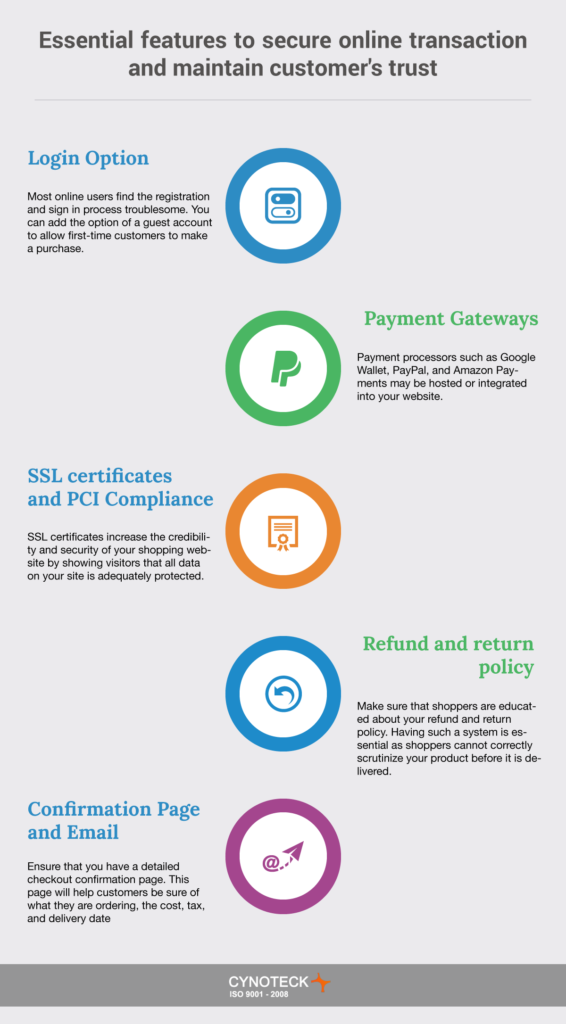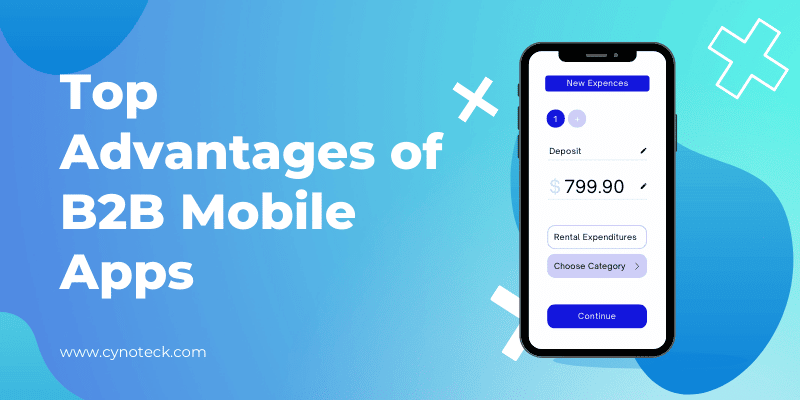Consumer trends and behaviour are beginning to change. More people prefer to order goods and pay online than to go to physical stores. Experts expect the number of online shoppers to increase by 20% by 2020. Fraudsters and thieves haunting online platforms hinder the growth of online financial transactions.
As an online merchant, it is your responsibility and your benefit to provide a simple and secure payment platform for your customers. If you plan on making your online shop safe and attractive to online shoppers, I advise you to go through the list below.
Essential Features to Secure Online Transaction and Maintain Customer’s Trust
1. Login Option
Most online users find the registration and sign in process troublesome. You can add the option of a guest account to allow first-time customers to make a purchase. You may require registration on subsequent logins. You may also enable login authorization through social media accounts or phone numbers.
2. Payment gateways
Introducing a payment processor will allow you to receive and authorize payments online. Payment processors such as Google Wallet, PayPal, and Amazon Payments may be hosted or integrated into your website.
3. SSL certificates and PCI Compliance
SSL certificates increase the credibility and security of your shopping website by showing visitors that all data on your site is adequately protected. PCI is a data protection standard that ensures that users’ data are well protected and not exploited.
4. Refund and return policy
Make sure that shoppers are educated about your refund and return policy. Having such a system is essential as shoppers cannot correctly scrutinize your product before it is delivered. This policy will increase their trust and respect for your website. Provide clear information on refund policy, refund charges, and return timeline.
5. Confirmation Page and Email
Ensure that you have a detailed checkout confirmation page. This page will help customers be sure of what they are ordering, the cost, tax, and delivery date. A confirmation email is also essential as a contact point for your customers.

Payment processor integration tips
Before integrating a payment processor into your website or shopping app, please check out its:
Cost of Service
It is essential to check the payment plans and the cost of services before choosing the payment processing platforms. Changing processing platforms is a time-consuming process and will cost you downtime.
Ensure you understand the payment schemes and select the ones that are the most suitable for your budget.
Completion Rate
The number of transactions completed by a processing platform tells you how efficient it is. Getting a cheap platform that makes it difficult for buyers to pay for your products will make you lose money and customers. Completion rates of 89-95% are typical among popular processing brands.
Installation and Maintenance
The cost and ease of installation are easy to measure. On the other hand, comfort and cost of maintenance may not. It is vital to get an idea because this might cause difficulties in the future. Go with the plan that is easiest and most affordable to implement.
Multi-currency Support
These kinds of payment processors are more useful for merchants selling to customers from other countries. To international merchants, the number of foreign currencies supported will determine the speed of scalability.
Security and PCI compliance
Arguably the most critical feature. The payment processor must offer adequate security to users and customers. PCI compliance gets you the trust of your customers and increases the integrity of your shopping website.
Payment gateways should provide layers of security such as tokens, passwords, and encryption to improve security.
Payment processor Security Website
It is vital to protect yourself and your customers from data thieves and fraudsters. Cybercriminals are very knowledgeable of the online process and will exploit any security fault. There are a few methods of ensuring security.
SSL Protocol
SSL certificates serve as insurance to customers and visitors that your site is secure. An SSL certified site shows the padlock symbol on the URL address bar. SSL ensures that customers’ financial data are protected.
PCI compliance
Payment Card Industry Data Security Standards (PCO DSS) is a guideline that helps online merchants secure financial data of their customers. PCI requires merchant websites to use encrypted pathways when processing payments.
Tokenization
A token is a randomly generated string of characters (numbers or symbols) to replace sensitive data. During transactions, tokens are generated to ensure proper identification and authorization. The time limit and randomization of tokens ensure that of tokens get stolen, they can’t be used.
Address Verification Service
This method requires the user to provide a physical address along with other financial information. This provides an added layer of security because most times, online thieves do not know the physical address of their victims.
3D secure
3D secure is another additional security layer. It generates a password for each user’s credit card. The password is then used to verify the identity of the user before authorizing any financial transaction.
Payment processor integrations
Security
It is general knowledge that cybercriminals haunt the internet, and phishers roam around trying to steal from everyone. Although customers trust your brand, it is crucial to protect yourself and them by using properly encrypted gateways. Always ensure PCI compliance in every financial transaction made. A few security layers include:
- high-level SSL encryption (128 bit encrypted)
- Use of digital signatures
- Dynamic IP
Hosted and Integrated Payment Gateways
New stores mostly use hosted gateways because they are quicker and easier to set up. Hosted gateways redirect buyers to the financial platform, which will process financial information and ensure payment.
Integrated gateways are linked with your website via an API code. It allows customers to input data and pay for products without leaving your site. Since customers don’t leave your site, they can make more purchases without losing attention.
User experience
User experience is essential for marketing websites. Websites that are difficult to operate have too many steps or require too much information that would cause buyers to lose interest and walk away. Also, if the rectification process takes too long, buyers may get frustrated with your website.
You must use intuitive icons, payment gateways that accept all the popular debit and credit cards. The number of mobile devices online shoppers is more than desktop users, and this makes it essential to use a mobile-friendly gateway or create a mobile app.
International Acceptance
While local markets may be thriving, you can take advantage of the global market to boost your business scalability. Ensure that the chosen payment gateway is recognized and accepted internationally. Such a decision will enable you to attract and maintain customers from other countries.
Business compatibility
Before choosing a payment processing gateway, go through their current clients or business types that they support. You must ensure that your kind of business is on the list.
Customer support
As part of your research, determine what kind and level of customer support that the gateway platform provides. Ensure that support is provided at once or within working hours, this will ensure that errors are quickly rectified.
Cost
Cost and payment plans are a significant determinant for the quality of the platform you can afford. Ensure that your chosen platform is not too expensive and without sacrificing security or quality service.
Conclusion:
Integrating a payment processor into your website is more than just a technical implementation; it’s a pivotal step in shaping the online shopping experience and ensuring smooth transactions for customers. The considerations outlined in this article offer essential insights into creating a secure, user-friendly, and efficient payment process for your website.
These key factors aren’t merely technical requirements; they represent the foundation for building trust, ensuring security, and streamlining the purchasing journey for online customers. Emphasizing security measures, understanding user preferences, and offering diverse payment options contribute significantly to the overall success of the integration process.
The importance of a seamless payment integration process cannot be overstated. It’s about creating an environment that instills confidence in customers, ensures the security of their financial information, and provides a hassle-free transaction experience. Incorporating these considerations elevates user satisfaction and contributes to the credibility of your online business.
In today’s digital landscape, the success of integrating a payment processor into a website lies not just in the technical implementation, but in the overall user experience it delivers. The ability to offer secure, flexible, and intuitive payment methods plays a crucial role in attracting and retaining customers, driving conversions, and ultimately, boosting business growth.
In essence, the integration of a payment processor into a website isn’t just about enabling transactions; it’s about building a relationship of trust with your customers. By focusing on security, convenience, and user preferences, businesses can create an online environment that not only simplifies the payment process but also fosters customer loyalty, ultimately leading to sustained success in the competitive e-commerce landscape.

Mobile App Development Services
Do you want to leverage mobile technology for your business? Cynoteck is a one-stop Mobile app Development Services provider. We provide iOS and Android application development services so that you can reach your target audience on any device.




